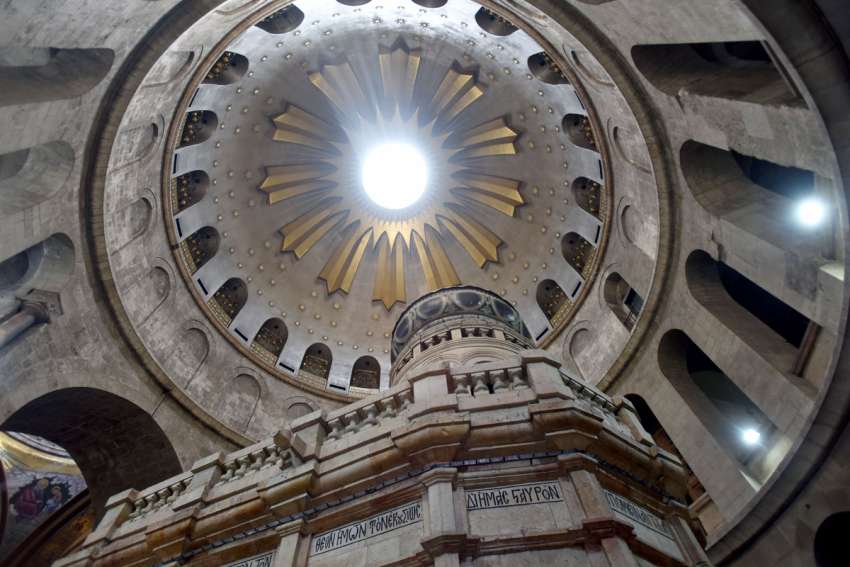That church is a place of riotous beauty, redolent with holiness. To be there is to absorb history, architecture and human ingenuity.
But is it the “holiest site” of Christianity? How do we assess holiness? Is it simply a way of cataloguing things like “the largest mammal” or “the richest individual”?
Our urge to visit such exotic places reflects a desire to discover holiness. And we need to learn to recognize holiness. In this era of anxiety, discord and untruth, it’s urgent we train our eyes to see things as they are — which also means recognizing holiness where it is.
It can look like the person next to you, whom you might envy, pity or not notice. Pope Francis urged us to look for “the saint next door.” It is at home, next door, in places we frequent every day, that we discover if there is holiness in this world, whether God is in this world.
Many people have taught me holiness is real. There is such a thing as a holy person, not just in history but today.
Holiness can look like the man beset with a pornography addiction whose struggle is mighty, even inducing despair. Yet he gets up in the morning and prays, attends a meeting, accepts the help of friends and professionals and knows he is welcome in church whether he has used pornography that day or not. He weeps at the pure touch of Jesus’ love and seeks to be closer to Him.
It looks like the woman, overcome for years by an eating disorder that ravaged her body and her relationships, who returns again to church to give thanks to God for her life and bask in the beauty of this gift. The terrible lie that she is “no good” besets her daily but she sees
He loves her. Because He loves her, she seeks to be reconciled with herself and others.
Holiness has to do with closeness to God, for God alone is holy. “Speak to all the congregation of the children of Israel, and say to them: ‘You shall be holy, for I the Lord your God am
holy,’ ” (Leviticus 19:2). God is holy; holiness is Godliness.
And holiness is offered us, asked of us all. A person can shine with holiness greater than the light of the brightest sun, because that is our human calling and destiny, to participate in the divine life through Christ in the Holy Spirit. How can it be?
The call to holiness is a call to risk, to struggle, to let out the nets once again after a fruitless night of work, at the Lord’s summons. The opposite of holiness is to “stay safe” always and avoid life in our fear of pain and struggle. We will feel less suffering but also less joy,“recommencing the mystery of the Incarnation backwards,” as Georges Bernanos observed. God becomes human in the Incarnation, and humans try to “disincarnate” Christ. The call to holiness is a call to get awake. It’s not going to be easy. It will, however, make us sensitive to all the pains and joys life has.
As with the Church of the Holy Sepulcher, holiness is divinely given, but earthy and (thanks to the Incarnation) also completely human. Holiness emerges in the long, slow process of a life lived, sometimes clear and sharp but often apprehended in obscurity, pain and darkness — completed only at the final moment, the telos, of seeing God face-to-face.
Is the holiest site in Christianity where Christ walks with His beloved? Where someone feeds the hungry, as Jesus did for His disciples on the beach after their long night? Or visits the lonely and ill, as He did, and begged us to do? Is it the place where someone burdened by violence seeks peace, or someone is touched with kindness rather than possessiveness? Is it the tabernacle where His presence is held and honoured, the kiss of peace shared between strangers or siblings or the person receiving Christ’s body in Eucharist? Is it the threshold of the Church upon which the faithful walk to bring Him out into the world?
Is the holiest site the place where Jesus is dead and buried, or where His Resurrection is made known by the life of the Church?
(Marrocco can be reached at mary.marrocco@outlook.com.)


